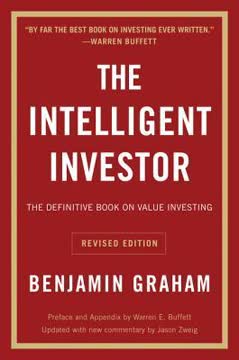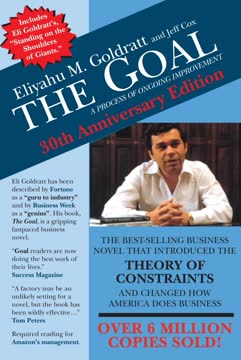Key Takeaways
1. Capture all tasks and ideas in a trusted system
"Your mind is for having ideas, not holding them."
Cognitive load reduction. By externalizing all tasks, ideas, and commitments into a reliable system, you free up mental energy for more creative and productive thinking. This practice helps prevent the stress of trying to remember everything and reduces the risk of forgetting important tasks.
Comprehensive capture. Implement a capture system that is:
- Always accessible (e.g., notebook, smartphone app)
- Easy to use
- Trusted to review regularly
This ensures that no potentially valuable thought or task slips through the cracks, allowing you to focus on execution rather than recall.
2. Clarify and organize incoming information
"You must use your mind to get things off your mind."
Decision-making framework. When processing captured items, ask yourself:
- What is it?
- Is it actionable?
- What's the next action?
- Does it belong to a project?
Organizational structure. Create distinct lists or categories:
- Next Actions
- Projects
- Waiting For
- Someday/Maybe
- Reference Material
This clarification process transforms vague ideas into concrete, actionable items or appropriately filed information, reducing overwhelm and increasing productivity.
3. Engage in regular reviews to stay on top of commitments
"The weekly review is the critical success factor for marrying your larger commitments to your day-to-day activities."
Weekly review ritual. Set aside time each week to:
- Review and update all action lists
- Process any loose papers or notes
- Review upcoming calendar events
- Evaluate the status of ongoing projects
Maintain system integrity. Regular reviews ensure your productivity system remains current and trustworthy. This practice helps you stay aligned with your goals, adjust priorities, and maintain a clear overview of your commitments and progress.
4. Take immediate action on tasks under two minutes
"If an action will take less than two minutes, it should be done at the moment it is defined."
Efficiency boost. The Two-Minute Rule prevents small tasks from cluttering your to-do list and reduces the overhead of tracking numerous minor items. By addressing these quick tasks immediately, you:
- Build momentum
- Clear mental space
- Prevent small tasks from becoming larger issues
Decision threshold. Use the two-minute mark as a decision point:
- If it takes less than two minutes, do it now
- If it takes longer, decide to delegate or defer it
5. Use the "Next Action" technique for project momentum
"You don't actually do a project; you can only do action steps related to it."
Project breakdown. For each project, clearly define:
- The desired outcome
- The very next physical action required to move it forward
Overcome inertia. By focusing on concrete, manageable next actions rather than overwhelming project scopes, you:
- Reduce procrastination
- Increase clarity and motivation
- Make steady progress on complex endeavors
Consistently asking "What's the next action?" keeps projects moving and prevents stagnation due to unclear next steps.
6. Implement the "Two-Minute Rule" for quick task completion
"If you determine an action can be done in two minutes, you actually should do it right then because it'll take longer to organize it and review it than it would be to actually finish it the first time you notice it."
Immediate execution. The Two-Minute Rule encourages immediate action on small tasks, leading to:
- Increased productivity
- Reduced mental clutter
- A sense of accomplishment
Habit formation. Consistently applying this rule develops a habit of swift decision-making and action-taking, which can carry over to larger tasks and projects.
7. Create a "Someday/Maybe" list for future possibilities
"It's useful to maintain an ongoing list of things you might want to do at some point but not now."
Future potential. The Someday/Maybe list serves as a holding area for:
- Ideas that aren't currently actionable
- Potential future projects
- Long-term goals or aspirations
Reduced pressure. By maintaining this list, you:
- Prevent good ideas from being lost
- Reduce the stress of trying to act on everything immediately
- Allow for periodic review and reassessment of future possibilities
Regularly review and update this list to keep it relevant and aligned with your evolving goals and priorities.
8. Utilize the "Waiting For" list to track delegated tasks
"Keeping track of things you're waiting for is a big part of the game of work and life."
Delegation tracking. The Waiting For list helps you:
- Monitor tasks you've delegated to others
- Follow up on important items
- Ensure nothing falls through the cracks
Accountability tool. Regularly reviewing this list allows you to:
- Maintain clear communication with team members
- Identify potential bottlenecks
- Take timely action on stalled tasks
Implement a system to note when you delegated each task and when you expect a response or completion.
9. Maintain a clear mind through external organization
"Your head is for having ideas, not for holding them."
Mental clarity. By externalizing all tasks, commitments, and ideas, you:
- Reduce mental stress and anxiety
- Improve focus and concentration
- Enhance creative thinking and problem-solving
Trusted system. Develop a reliable external system that includes:
- A capture tool (e.g., notebook, digital app)
- Organized lists (Next Actions, Projects, etc.)
- Regular review processes
Consistently using this system allows your mind to focus on the task at hand rather than trying to remember and juggle multiple commitments.
10. Practice the "Weekly Review" for consistent productivity
"The weekly review is the time to gather and process all your stuff, review your system, update your lists, and get clean, clear, and current."
System maintenance. The Weekly Review is crucial for:
- Processing new inputs
- Updating and reviewing all lists
- Ensuring your system is current and trustworthy
Strategic alignment. Use this time to:
- Reflect on your goals and priorities
- Adjust your focus based on changing circumstances
- Plan for the upcoming week
Consistently performing the Weekly Review helps maintain momentum, prevent overwhelm, and keep you aligned with your broader objectives.
11. Apply the "Natural Planning Model" for effective project management
"Your mind goes through five steps to accomplish virtually any task."
Five-step process. The Natural Planning Model follows these stages:
- Defining purpose and principles
- Outcome visioning
- Brainstorming
- Organizing
- Identifying next actions
Enhanced project clarity. By consciously applying this model, you:
- Gain a clearer understanding of project goals
- Generate more creative solutions
- Develop more effective action plans
Use this approach for both personal and professional projects to improve planning efficiency and increase the likelihood of successful outcomes.
Last updated:
Review Summary
Getting Things Done receives mostly positive reviews for its practical productivity system, though some find it outdated or overly detailed. Readers appreciate the focus on capturing tasks, processing them into actionable steps, and organizing them for efficient execution. Many report reduced stress and increased productivity after implementing the GTD method. Critics argue the book could be condensed and that some advice is geared towards executives. Overall, reviewers find value in the core concepts, even if they don't follow the entire system.
Similar Books









Download PDF
Download EPUB
.epub digital book format is ideal for reading ebooks on phones, tablets, and e-readers.









